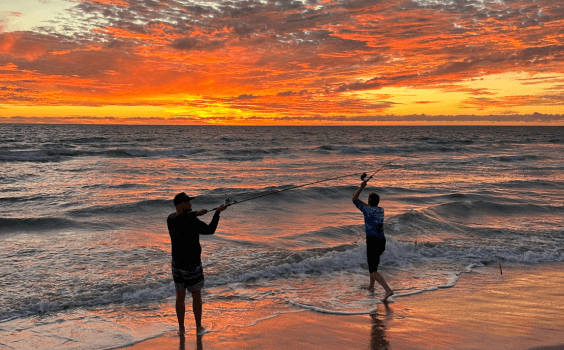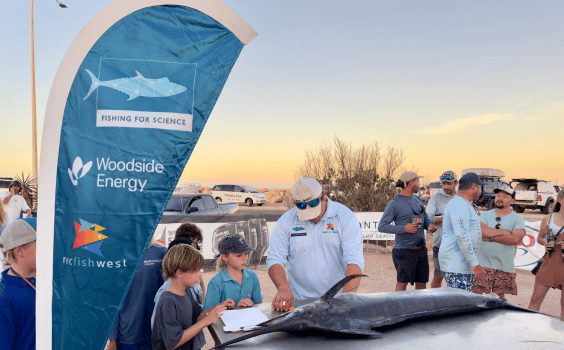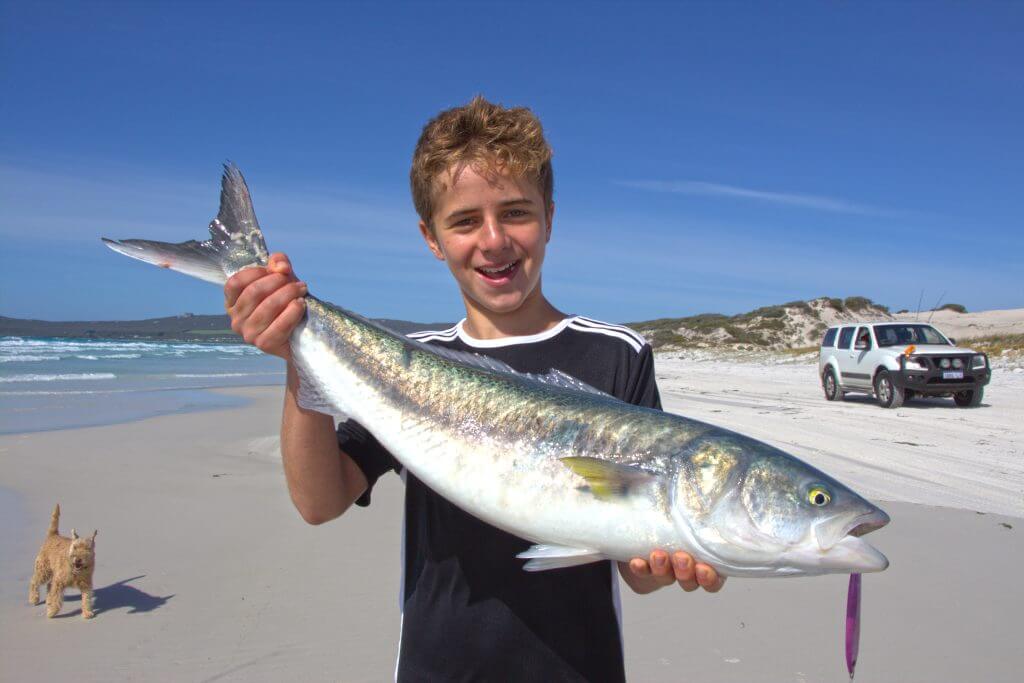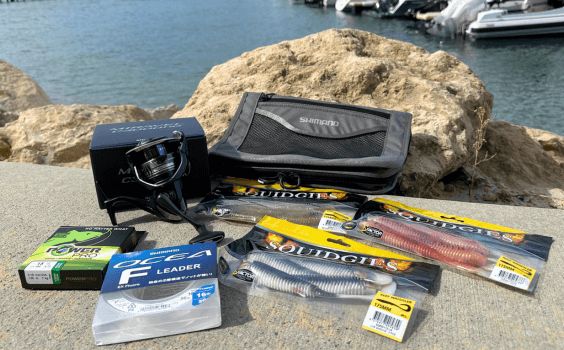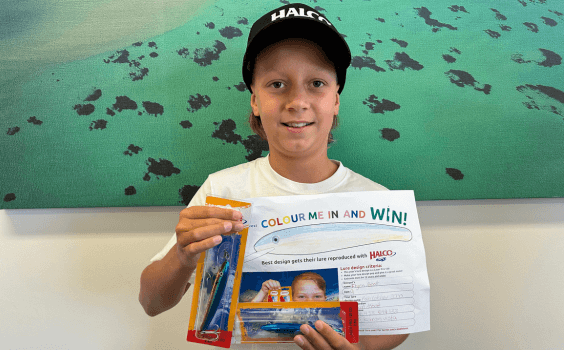In this week’s edition of Scott’s Species, Western Angler editor Scott Coghlan takes an in-depth look at giant trevally (GT).
Fish: Giant trevally, Caranx ignobilis
Eating: 1 star
Identification: Steeply sloping head, long pectoral fin, sharp flutes on tail.
The biggest and most fearsome of the trevally clan, giant trevally have become a premier sportfish across the fishing world and WA is fortunate to offer some exceptional fishing for them.
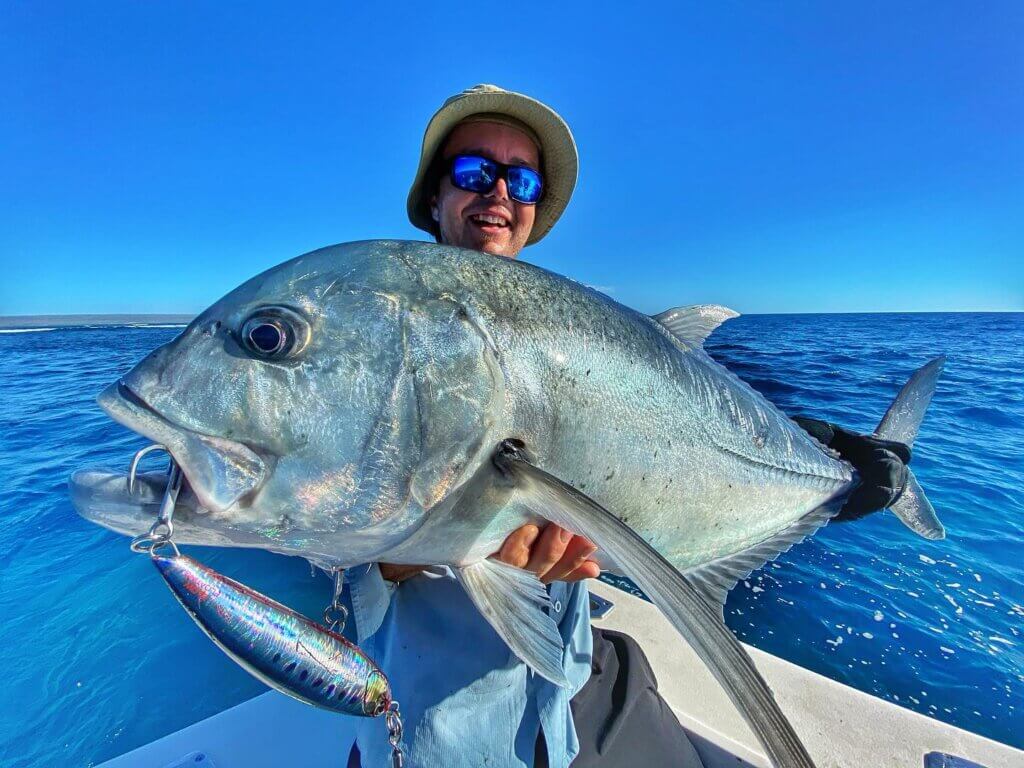
GTs can be found from Kalbarri going north and can be targeted by both shore and boat anglers.
Their crashing strikes on surface lures and sheer power when hooked up have made them one of the most sought-after species on the globe and many anglers will pay big money to tangle with them.
There are areas in the north of the State where schools of small GTs are in almost plague proportions at times and they can be a lot of fun on light gear. However, it is the trophy fish anglers crave and these are often found around exposed reef ledges, coral bommies and along dropoffs.
Fish encountered in these areas will often be more than 20 kilos, and can be as big as 60kg.
Splashy surface lures, such as poppers or stickbaits, can be dynamite. The chase and strike of a big GT is not easily forgotten. I can recall feeling like a Volkswagen bonnet had opened up and inhaled my lure after hooking an unstoppable one in the Pilbara, with the fish having half its body out of water when its cavernous mouth enveloped my Halco Roosta.
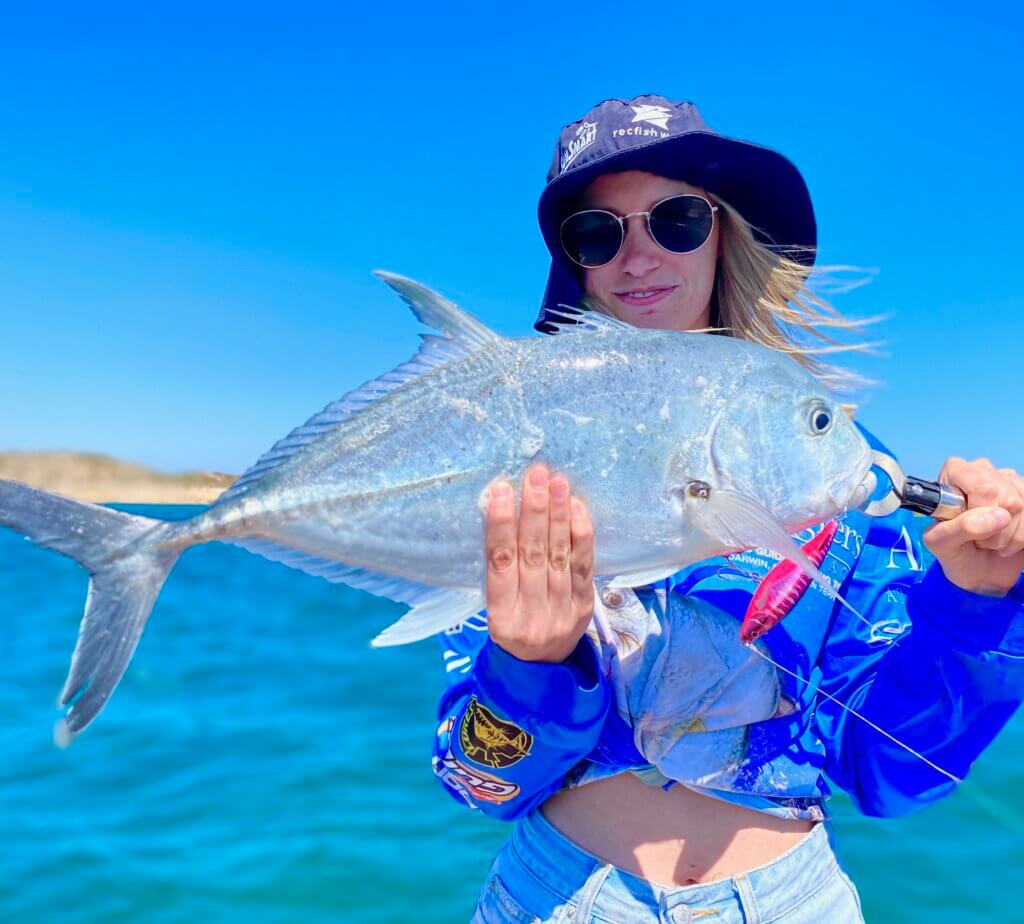
I’ll also never forget my first GT hookup, when I casted a popper at some skittish bait in the Dampier Archipelago and watched what looked like a series of depth charges going off as a big fish mowed down my lure.
Some of the better, more reliable, locations to target them in WA include Quobba (for shore anglers), the islands off Carnarvon, Ningaloo Reef, Exmouth Gulf, around the many islands in the Pilbara including the Dampier Archipelago, the Montebello and Mackerel Islands.
Exmouth can also offer shore fishing opportunities for GTs, while many anglers do their own self-sufficient trips to the Montes just to target them.
They are also found right through the Kimberley. They are often taken unexpectedly by anglers using other types of lure or baits for different species, but surface lures are clearly the best way to target them and capitalise on their sporting qualities.
One of my most fun days of fishing was cruising the shallows of an island off Onslow, spotting packs of them cruising and then sight casting to them.
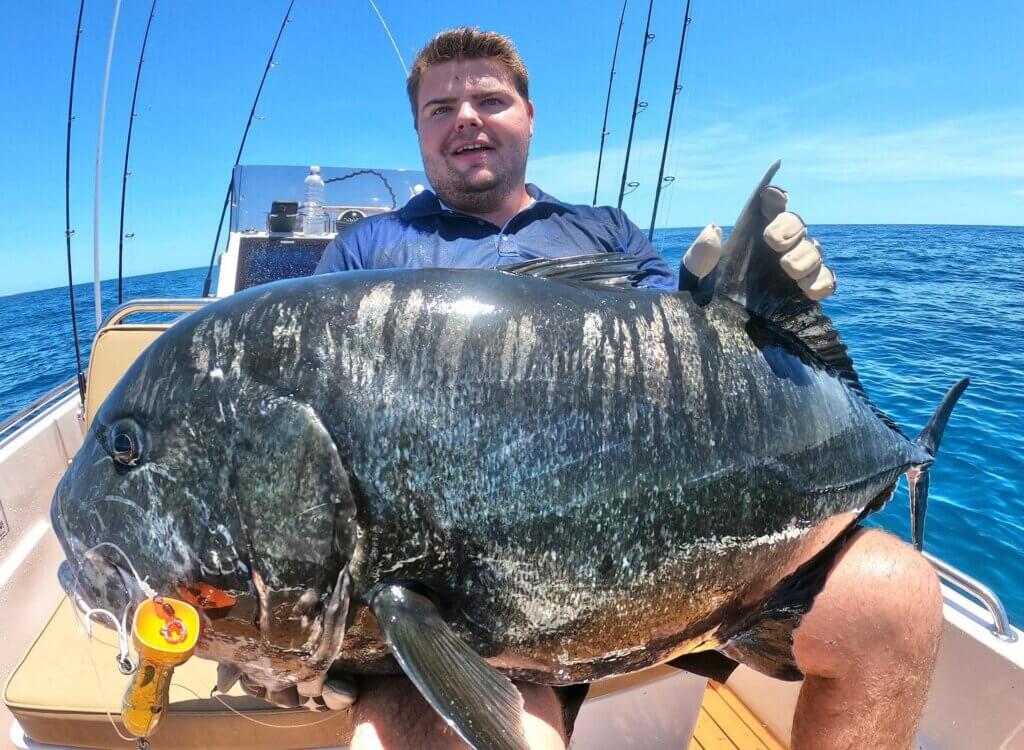
Gear for GTs needs to be very strong, and knots and terminal tackle need to be up to the task.
Line of at least 37kg in strength is recommended, and many anglers will use braid well upwards of 50kg.
Heavy casting leaders are also necessary, and offer protection against the line hitting a GT’s sharp tail flutes.
GTs handle well out of the water, generally staying fairly still, and are a very tough fish that releases well.
They are also a very vocal fish, grunting their disapproval very loudly while being handled.

